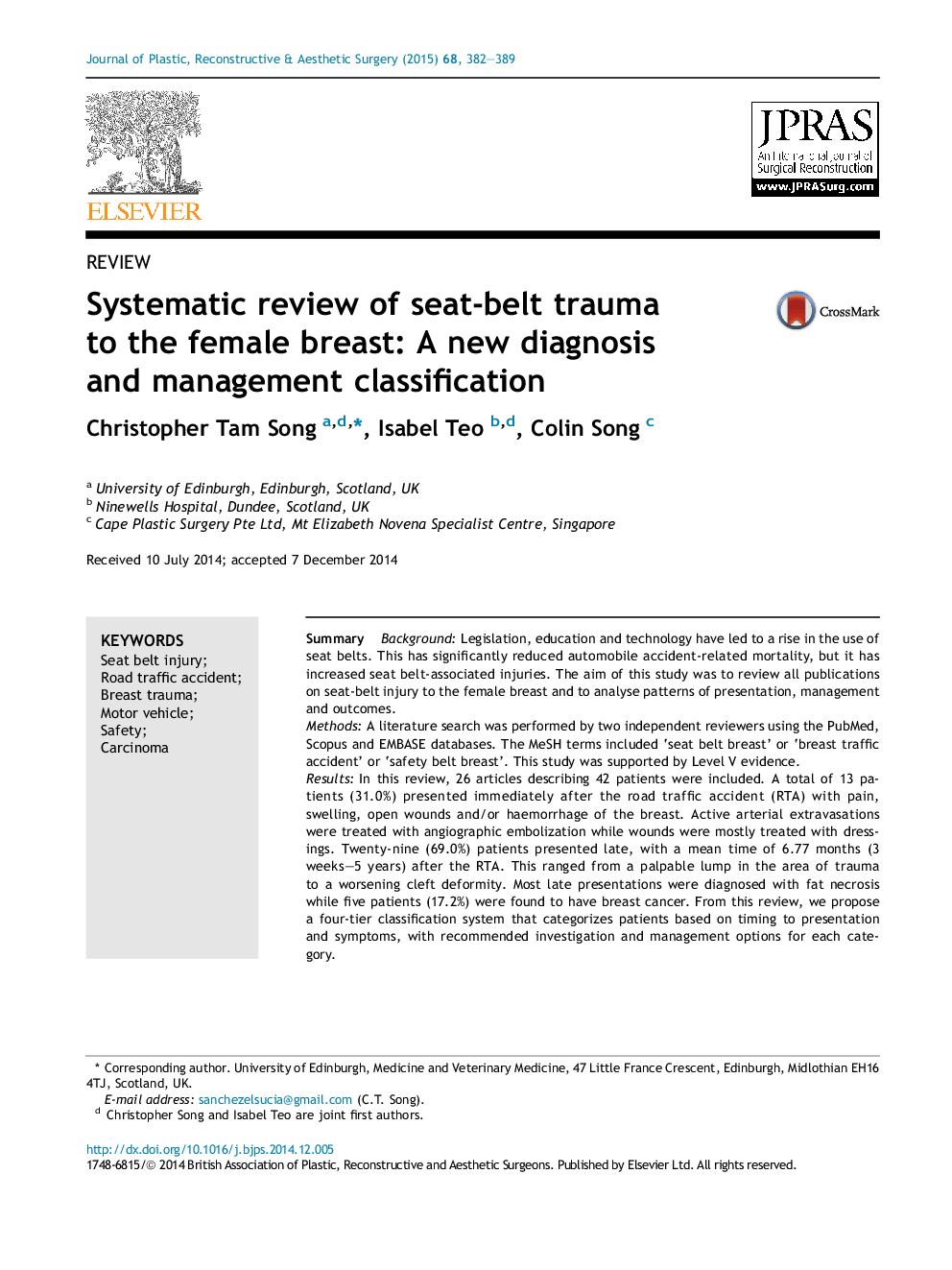| Article ID | Journal | Published Year | Pages | File Type |
|---|---|---|---|---|
| 4117282 | Journal of Plastic, Reconstructive & Aesthetic Surgery | 2015 | 8 Pages |
SummaryBackgroundLegislation, education and technology have led to a rise in the use of seat belts. This has significantly reduced automobile accident-related mortality, but it has increased seat belt-associated injuries. The aim of this study was to review all publications on seat-belt injury to the female breast and to analyse patterns of presentation, management and outcomes.MethodsA literature search was performed by two independent reviewers using the PubMed, Scopus and EMBASE databases. The MeSH terms included ‘seat belt breast’ or ‘breast traffic accident’ or ‘safety belt breast’. This study was supported by Level V evidence.ResultsIn this review, 26 articles describing 42 patients were included. A total of 13 patients (31.0%) presented immediately after the road traffic accident (RTA) with pain, swelling, open wounds and/or haemorrhage of the breast. Active arterial extravasations were treated with angiographic embolization while wounds were mostly treated with dressings. Twenty-nine (69.0%) patients presented late, with a mean time of 6.77 months (3 weeks–5 years) after the RTA. This ranged from a palpable lump in the area of trauma to a worsening cleft deformity. Most late presentations were diagnosed with fat necrosis while five patients (17.2%) were found to have breast cancer. From this review, we propose a four-tier classification system that categorizes patients based on timing to presentation and symptoms, with recommended investigation and management options for each category.ConclusionThis is the most comprehensive systemic review to date of seat-belt injuries to the female breast, and our proposed classification may be useful in the management of such patients.
